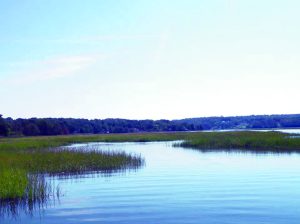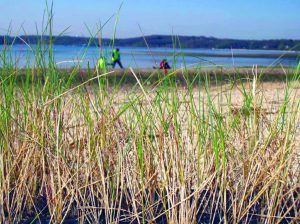
(Photo Source: Facebook)
Oyster Bay vulnerable to nitrogen pollution
Most people would agree that the inlets surrounding Oyster Bay and Cold Spring Harbor are some of the most picturesque and scenic parts of the north shore. Most people do not know the imminent danger that the harbors have been facing due to nitrogen runoff in Oyster Bay’s waterways. A recent study—published online by the Oyster Bay/Cold Spring Harbor Protection Committee—by the Nature Conservancy shows the impact of nitrogen pollution in our bays and waterways.
“They (the Nature Conservancy) used something called the Nitrogen Loading Model to better understand the sources and quantity of nitrogen impacting Long Island’s bays and harbors,” said executive director of Friends of the Bay, Paul DeOrsay.
DeOrsay said the mathematical model was developed by a researcher at the University of Connecticut to calculate nitrogen runoff based on land use into the watershed. The model makes it possible to estimate the absolute contributions of nitrogen from three major sources: wastewater (sewage treatment and septic tanks), fertilizers and atmospheric deposition, which is a natural occurrence.
When nitrogen enters the watershed through these sources it causes all sorts of harmful effects, including hypoxia—or too little oxygen in the water—fish kills, acidification and loss of critical habitats such as seagrasses and salt marshes. Nitrogen runoff also is a factor in the formation of brown and red tides which are harmful algal blooms.
DeOrsay said that incidences of bad algae have been increasing in bays across Long Island and that there is a concern about its proliferation from many environmental groups.

“As a result of the harmful algal blooms, the state of New York last year invested $5 million into the Long Island Nitrogen Action Plan (LINAP) to reduce the level of nitrogen in the waters,” said DeOrsay. “The Environmental Protection Agency also unveiled a nitrogen reduction to strategy to secure a healthier Long Island Sound.”
A lot of money has been spent to upgrade sewage treatment plants in recent years, which has created a big reduction in nitrogen pollution.
The Birches, a small neighborhood near Mill Neck Creek, recently had its septic system hooked up to the City of Glen Cove’s sewage treatment plant and the creek has shown measurable improvement in its nitrogen content.
Dealing with septic systems is a costly and complex endeavor, but one that needs to be undertaken sooner rather than later to further reduce nitrogen runoff, DeOrsay said.
“It is a very tough proposition because there are a couple of 100,000 of these things buried in peoples’ yards,” said DeOrsay. “How can we make it affordable and workable because it is something we need to get started on to keep our waters healthy and alive.”
DeOrsay said that it is a matter of priorities in dealing with septic systems and areas nearest to the shorelines and with high water tables should take precedence.
“The Village of Bayville for example has a real high water table and household sewage does not have that far to travel before reaching the shoreline,” said DeOrsay. “It is one place I think that we should pay attention to and make an investment in.”
The biggest culprits of fertilizers entering our bays and harbors is from golf courses and athletic fields.
Reducing fertilizers from golf courses would have a 25 percent reduction of nitrogen going into the bay.
DeOrsay said that Oyster Bay has been fortunate with its number of harmful algal blooms compared to areas out east and on the south shore. He said that the large amount of clams and oysters in the bay have helped alleviate the nitrogen problem.
“There have been some concerns in the corners of Oyster Bay and algae has been detected on the inner part of Cold Spring Harbor, but not at dangerous concentrations,” said DeOrsay. “By and large we are in pretty good shape.”
































